Happy Birthday, Mae West!
It’s a textbook example of how a mediocre movie can be redeemed by the appearance of a personality whose mere presence dominates the motion picture screen. In an otherwise dreary 1932 film entitled Night After Night (starring George Raft and Constance Cummings), a character named Maudie Triplett rings the doorbell of the speakeasy run by Joe Anton (Raft). As she “makes herself to home,” Maudie is approached by a hatcheck girl (Patricia Farley) who is quite taken with Ms. Triplett’s jewelry. “Goodness, what beautiful diamonds!” the dazzled employee burbles in delight. “Goodness had nothing to do with it, dearie,” retorts Maudie.
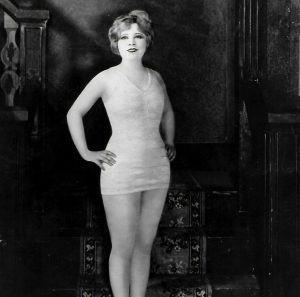 Night After Night marked the movie debut of Mary Jane West—born in Kings County, NY on this date in 1893. We know her better as Mae West, and curiously, she was reluctant to take on the Night assignment at first—it was Raft himself who requested she play the part, which she eventually agreed to do after getting an okay from producer William LeBaron to rewrite her dialogue. “She stole everything but the cameras,” George was purported to have remarked in hindsight, and in each subsequent vehicle that West starred in during her stint at Paramount in the 1930s, she continued to commit petty larceny.
Night After Night marked the movie debut of Mary Jane West—born in Kings County, NY on this date in 1893. We know her better as Mae West, and curiously, she was reluctant to take on the Night assignment at first—it was Raft himself who requested she play the part, which she eventually agreed to do after getting an okay from producer William LeBaron to rewrite her dialogue. “She stole everything but the cameras,” George was purported to have remarked in hindsight, and in each subsequent vehicle that West starred in during her stint at Paramount in the 1930s, she continued to commit petty larceny.
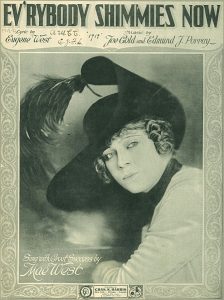 Mae West was born the eldest of four children to John Patrick West (a prizefighter and later private investigator) and Mathilde “Tillie” Delker (a former fashion model). West’s show business ambitions were encouraged at the age of five when she entertained at a church social, and two years later she began appearing in talent shows and entering amateur competitions, where she frequently won prizes. At 14, Mae began performing in vaudeville with the Hal Clarendon Stock Company, and she landed her first Broadway gig with a revue entitled A La Broadway in 1911. Though she was billing herself as “Jane Mast,” a review in The New York Times misidentified her in one show as “Mae West”—and the name just stuck. West would go on to appear in productions like Vera Violetta (with Al Jolson) and Sometime (with Ed Wynn).
Mae West was born the eldest of four children to John Patrick West (a prizefighter and later private investigator) and Mathilde “Tillie” Delker (a former fashion model). West’s show business ambitions were encouraged at the age of five when she entertained at a church social, and two years later she began appearing in talent shows and entering amateur competitions, where she frequently won prizes. At 14, Mae began performing in vaudeville with the Hal Clarendon Stock Company, and she landed her first Broadway gig with a revue entitled A La Broadway in 1911. Though she was billing herself as “Jane Mast,” a review in The New York Times misidentified her in one show as “Mae West”—and the name just stuck. West would go on to appear in productions like Vera Violetta (with Al Jolson) and Sometime (with Ed Wynn).
Mae West began writing plays for herself (using “Jane Mast” as her pseudonym) and achieved notoriety with a Broadway play entitled Sex (1926). The risqué content of the production would get her in trouble with the law; one night the theatre was raided, and West was prosecuted and convicted on a charge of “corrupting the morals of youth.” Even then, Mae realized there was no such thing as “bad publicity”—she insisted on serving out her ten-day sentence in jail (though she only had to do eight, released early for good behavior) and in doing so burnished her reputation as a “bad girl.” West followed the success of Sex with Diamond Lil (1928), while writing and starring in such plays as The Wicked Age, Pleasure Man, and The Constant Sinner.
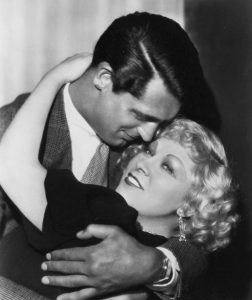 Paramount made Mae West an offer in 1932 despite the fact that she was nearly 40 years old. Having walked off with Night After Night, the studio wanted her to be the star of her next picture and Mae proposed that it be based on Diamond Lil. Renaming her character “Lady Lou” (“one of the finest women who ever walked the streets”) for She Done Him Wrong (1933). West defied the powers-that-be (they were wary of doing a “period piece”) with a comedy that created a major sensation (Mae’s male co-star was a then-unknown Cary Grant). It grossed $2 million at a time when the industry was taking a beating due to the Depression. In fact, producer LeBaron would later credit Wrong with saving Paramount from bankruptcy. But Wrong had its downside; it created such a controversy that it led directly to the establishment of the Hollywood Production Code, changing the face of filmmaking.
Paramount made Mae West an offer in 1932 despite the fact that she was nearly 40 years old. Having walked off with Night After Night, the studio wanted her to be the star of her next picture and Mae proposed that it be based on Diamond Lil. Renaming her character “Lady Lou” (“one of the finest women who ever walked the streets”) for She Done Him Wrong (1933). West defied the powers-that-be (they were wary of doing a “period piece”) with a comedy that created a major sensation (Mae’s male co-star was a then-unknown Cary Grant). It grossed $2 million at a time when the industry was taking a beating due to the Depression. In fact, producer LeBaron would later credit Wrong with saving Paramount from bankruptcy. But Wrong had its downside; it created such a controversy that it led directly to the establishment of the Hollywood Production Code, changing the face of filmmaking.
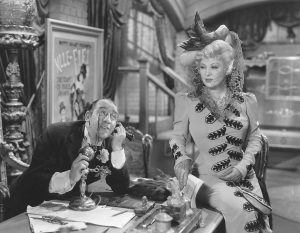 The Production Code didn’t do too much damage to Mae West’s next feature, I’m No Angel (1933; her most successful film at the box office and one that re-teamed her with Cary Grant). However, by the time Belle of the Nineties (1934) went before the cameras, the “Code” would rob each successive Mae West film of its potency by censoring much of West’s suggestive dialogue. Mae was such an intoxicating presence that even lesser vehicles like Goin’ to Town (1935) and Go West, Young Man (1936) are of interest simply because she’s there. Klondike Annie (1936), though sanitized, is quite enjoyable. In that one, Mae impersonates a deceased missionary…and finds the experience a redeeming one. Her final film for Paramount, Every Day’s a Holiday (1937), is also highly recommended, with an outstanding supporting cast and solid story line. Oddly enough, it was a box office flop…so Mae was given her pink slip.
The Production Code didn’t do too much damage to Mae West’s next feature, I’m No Angel (1933; her most successful film at the box office and one that re-teamed her with Cary Grant). However, by the time Belle of the Nineties (1934) went before the cameras, the “Code” would rob each successive Mae West film of its potency by censoring much of West’s suggestive dialogue. Mae was such an intoxicating presence that even lesser vehicles like Goin’ to Town (1935) and Go West, Young Man (1936) are of interest simply because she’s there. Klondike Annie (1936), though sanitized, is quite enjoyable. In that one, Mae impersonates a deceased missionary…and finds the experience a redeeming one. Her final film for Paramount, Every Day’s a Holiday (1937), is also highly recommended, with an outstanding supporting cast and solid story line. Oddly enough, it was a box office flop…so Mae was given her pink slip.
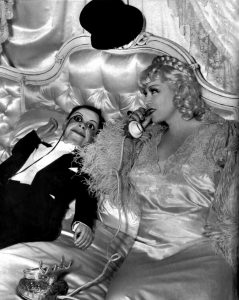 On December 12, 1937, Mae West was the guest star on the popular Chase and Sanborn Hour. She portrayed “Eve” opposite Don Ameche’s “Adam” in an irreverent sketch (written by Arch Oboler). Although it is mind-bogglingly tame by today’s standards, it is thought to have been the catalyst for the performer’s eventual banishment from radio for an indefinite period of time. (You weren’t even allowed to utter her name for fear of incurring the censors’ wrath.) A routine she did with Charlie McCarthy—in which she delivered the dialogue a little too suggestively—is also believed responsible for her exile in the aural medium. (The antics of Charlie and Edgar Bergen were favorites among family audiences…who were shocked to hear these shenanigans on a Sunday!) Over a decade later, having served her penance, Mae was finally allowed back on the air as a guest on Perry Como’s Chesterfield Supper Club on February 16, 1950.
On December 12, 1937, Mae West was the guest star on the popular Chase and Sanborn Hour. She portrayed “Eve” opposite Don Ameche’s “Adam” in an irreverent sketch (written by Arch Oboler). Although it is mind-bogglingly tame by today’s standards, it is thought to have been the catalyst for the performer’s eventual banishment from radio for an indefinite period of time. (You weren’t even allowed to utter her name for fear of incurring the censors’ wrath.) A routine she did with Charlie McCarthy—in which she delivered the dialogue a little too suggestively—is also believed responsible for her exile in the aural medium. (The antics of Charlie and Edgar Bergen were favorites among family audiences…who were shocked to hear these shenanigans on a Sunday!) Over a decade later, having served her penance, Mae was finally allowed back on the air as a guest on Perry Como’s Chesterfield Supper Club on February 16, 1950.
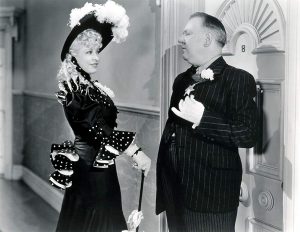 Though she wasn’t getting the warmest of welcomes over the radio airwaves, Mae West would soon go back to work at Universal with My Little Chickadee (1940), a collaborative effort with fellow studio stablemate W.C. Fields. (The studio had hoped to duplicate the success of 1939’s Destry Rides Again.) Chickadee has its fans and detractors; some argue that two dominant personalities simply weren’t meant to share the screen, but others (like myself) are convinced that it represents some of West’s best work. (Chickadee features one of Mae’s classic retorts: to a judge who asks if she’s trying to show contempt for his court—”No, your Honor…I’m doin’ my best to hide it!”) Though the production of Chickadee was a rocky one, it performed quite well at the box office. Despite reservations, West agreed to star in The Heat’s On (1943)—as a favor to her pal Gregory Ratoff—but the tepid Columbia comedy would mark her last film appearance until 1970’s Myra Breckinridge.
Though she wasn’t getting the warmest of welcomes over the radio airwaves, Mae West would soon go back to work at Universal with My Little Chickadee (1940), a collaborative effort with fellow studio stablemate W.C. Fields. (The studio had hoped to duplicate the success of 1939’s Destry Rides Again.) Chickadee has its fans and detractors; some argue that two dominant personalities simply weren’t meant to share the screen, but others (like myself) are convinced that it represents some of West’s best work. (Chickadee features one of Mae’s classic retorts: to a judge who asks if she’s trying to show contempt for his court—”No, your Honor…I’m doin’ my best to hide it!”) Though the production of Chickadee was a rocky one, it performed quite well at the box office. Despite reservations, West agreed to star in The Heat’s On (1943)—as a favor to her pal Gregory Ratoff—but the tepid Columbia comedy would mark her last film appearance until 1970’s Myra Breckinridge.
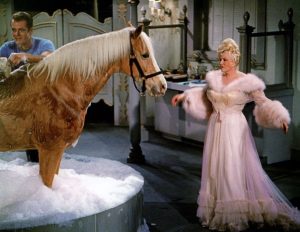 Mae West had multiple opportunities to jump-start her film career: she was offered the starring role in Sunset Blvd. (1950), which ultimately went to Gloria Swanson, and she said no to 1957’s Pal Joey (Rita Hayworth wound up playing her part). Mae kept busy in night clubs and on stage (with 1944’s Catherine the Great and a revival of Diamond Lil [1949-51]) and found a home on the small screen with appearances on The Red Skelton Show and Mister Ed (a classic). Her cinematic swan song was 1978’s Sextette (a film version of her 1961 Broadway hit), which featured an impressive celebrity cast (including her Night After Night co-star George Raft). Mae West finally shuffled off this mortal coil in 1980 at the age of 87.
Mae West had multiple opportunities to jump-start her film career: she was offered the starring role in Sunset Blvd. (1950), which ultimately went to Gloria Swanson, and she said no to 1957’s Pal Joey (Rita Hayworth wound up playing her part). Mae kept busy in night clubs and on stage (with 1944’s Catherine the Great and a revival of Diamond Lil [1949-51]) and found a home on the small screen with appearances on The Red Skelton Show and Mister Ed (a classic). Her cinematic swan song was 1978’s Sextette (a film version of her 1961 Broadway hit), which featured an impressive celebrity cast (including her Night After Night co-star George Raft). Mae West finally shuffled off this mortal coil in 1980 at the age of 87.
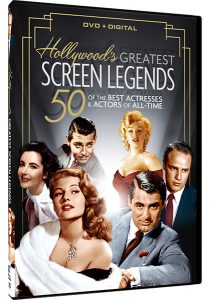 Mae West is one of the many big-name celebrities (50 in all) spotlighted in Hollywood’s Greatest Screen Legends, a 4-DVD collection available from Radio Spirits. Happy birthday to the screen legend who reminded us: “When I’m good, I’m very, very good. But when I’m bad, I’m better.”
Mae West is one of the many big-name celebrities (50 in all) spotlighted in Hollywood’s Greatest Screen Legends, a 4-DVD collection available from Radio Spirits. Happy birthday to the screen legend who reminded us: “When I’m good, I’m very, very good. But when I’m bad, I’m better.”

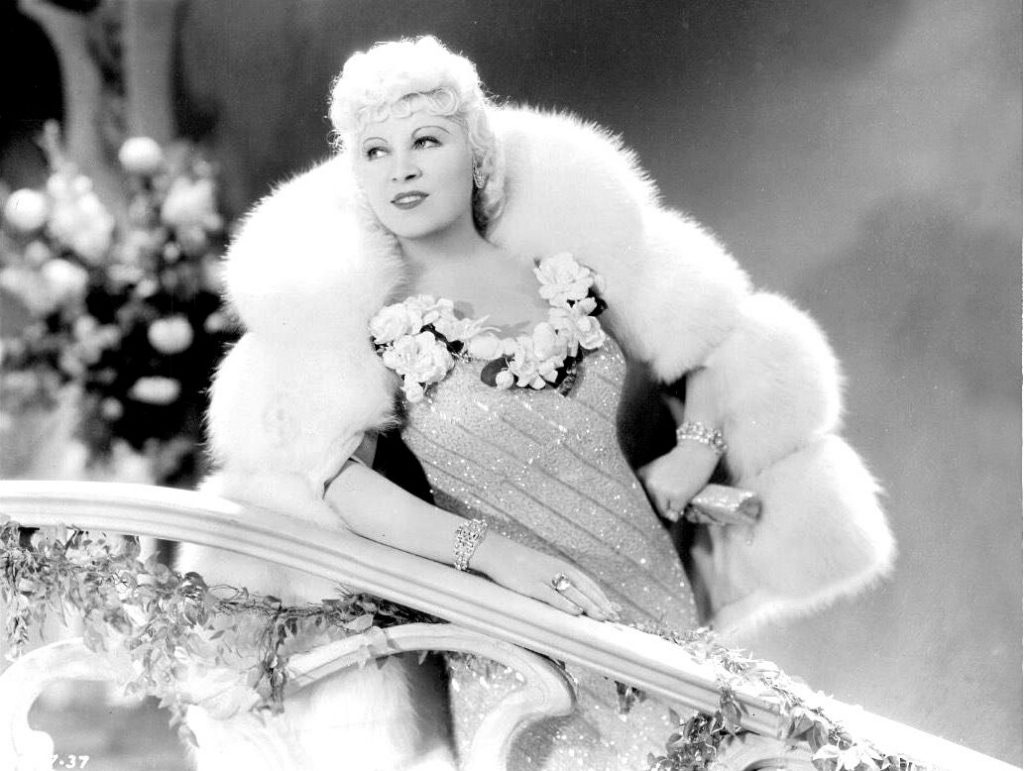

Another great historical Bio!!! Thanks for making these!!!
Thanks for taking the time to read it!
A great tribute to an entertainment legend.